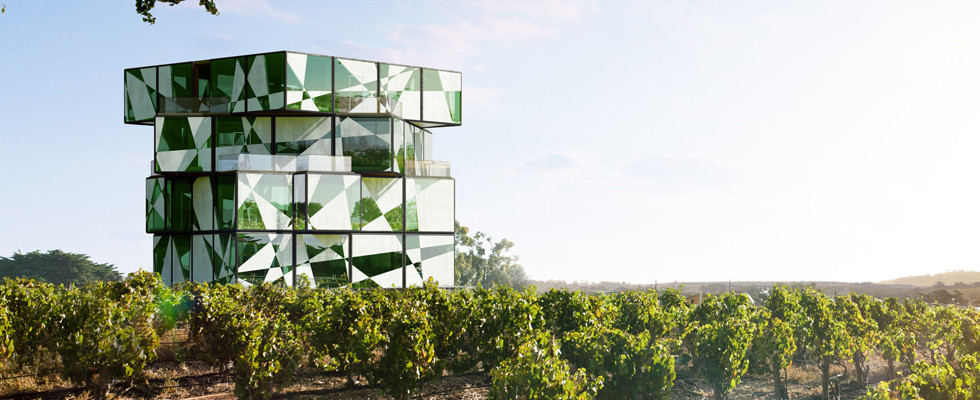By Nigel Hopkins
A leading Australian winemaker will soon open a cellar door that promises to thrill all the senses to improve the bottom line.
For d’Arenberg Winery’s Chester Osborn, the five-storey AUD$14 million glass-encased steel and concrete structure inspired by Rubik’s Cube is the realisation of a 13-year dream.
Osborn, 54, is the chief winemaker and futurist for the company his great grandfather Joseph Osborn founded 104 years ago but is equally well known for his love of art and his eclectic and eccentric collection of shirts.
His audacious d’Arenberg Cube – an architectural puzzle four modules wide, four high and four deep – is already soaring above its surrounding Mourvedre vineyards in the heart of McLaren Vale, a fast 40km drive south of Adelaide, South Australia.
Due to officially open in May 2017, the Cube promises to be a remarkable assault on the senses of anyone who ventures inside.
It will be filled with art installations, a “wine fog room”, flagons connected to bicycle horns to ‘beep’ the smell, wine tasting rooms, a restaurant, and a top balcony made of two-tonne glass panels.
Not surprisingly there are those who see the Cube as Chester’s folly, and Osborn concedes he has at times made both his father d’Arry, and his board a bit nervous
“Some people refer to this as Willy Wonka’s wine factory, and in a way it is,” Osborn says.
But the numbers and research back Chester.
“With 500 acres of organic and biodynamic vines we represent about a third of all McLaren Vale’s premium production,” he says. “And we’re the busiest cellar door in the region with 50,000 visitors a year.”
Research released last year by the University of South Australia’s Ehrenberg-Bass Institute found that a visit to a winery’s cellar door made consumers more likely to buy the winery’s product for months after the visit.
Lead researcher Professor Johan Bruwer said the research showed a cellar door visit had a much wider impact beyond sales on the day.
“The cellar door can give the brand a good story if those who visit and taste the wine have had a good, authentic, and memorable experience. People who visit a cellar door also become more educated about the wine region and this increases the consumption of wines of that origin,” Prof Bruwer said.
During the six-month period after a cellar door visit, the buyer group (54 per cent of visitors) bought an average of 9.1 bottles of the winery’s wine. The likelihood of making future purchases are 47 per cent on average.
Most importantly, 16 per cent of cellar door visitors who had never bought the brand before – this gain can be directly attributed to the cellar door visit and experience.
And the Cube promises quite the experience.
Osborn plans to fill any vacant space with art installations he’s either commissioned or collected over the years. There will be an “art installation room” created to give the impression of being inside a wine fermenter featuring an installation by award-winning local artist Jane Skeer of hundreds of dangling VHS video tapes, combined with projections of people treading grapes.
“We want this to be very stimulating,” Osborn says, adding that this space can also double as a dining venue for special occasions
“We really needed a bigger tasting area and new offices, and d’Arry’s Verandah restaurant has been full for the past 12 years. I just woke up one morning and thought why do we want to recreate fake history, so I sat down and drew this. It took me 20 minutes.”
The Cube will nearly double d’Arenberg’s current workforce to just over 100, adding another $2 million a year to the wages bill, but with wine tourism rapidly picking up, Osborn says predictions of 500,000 visitors a year might not be out of the question.






















